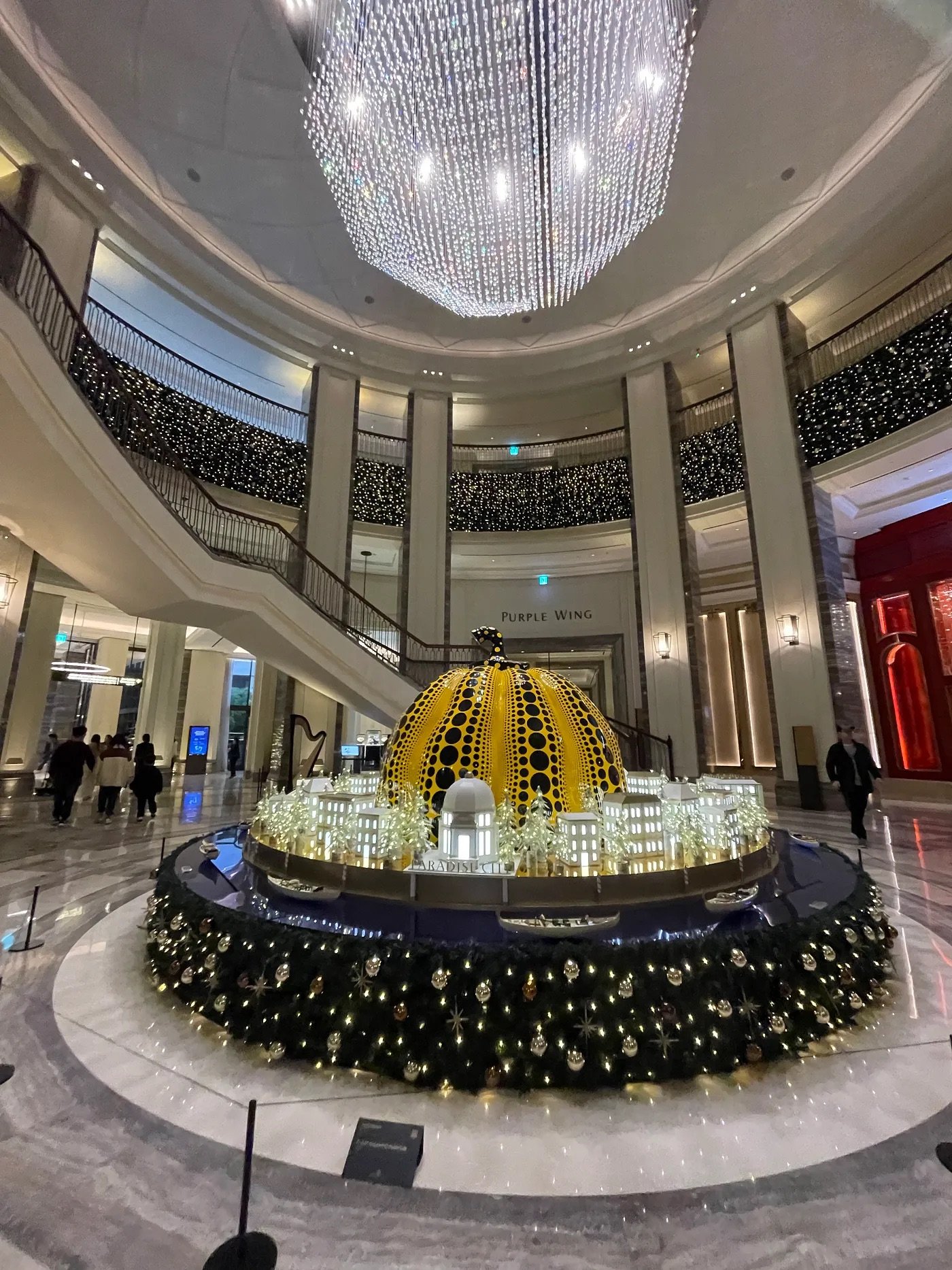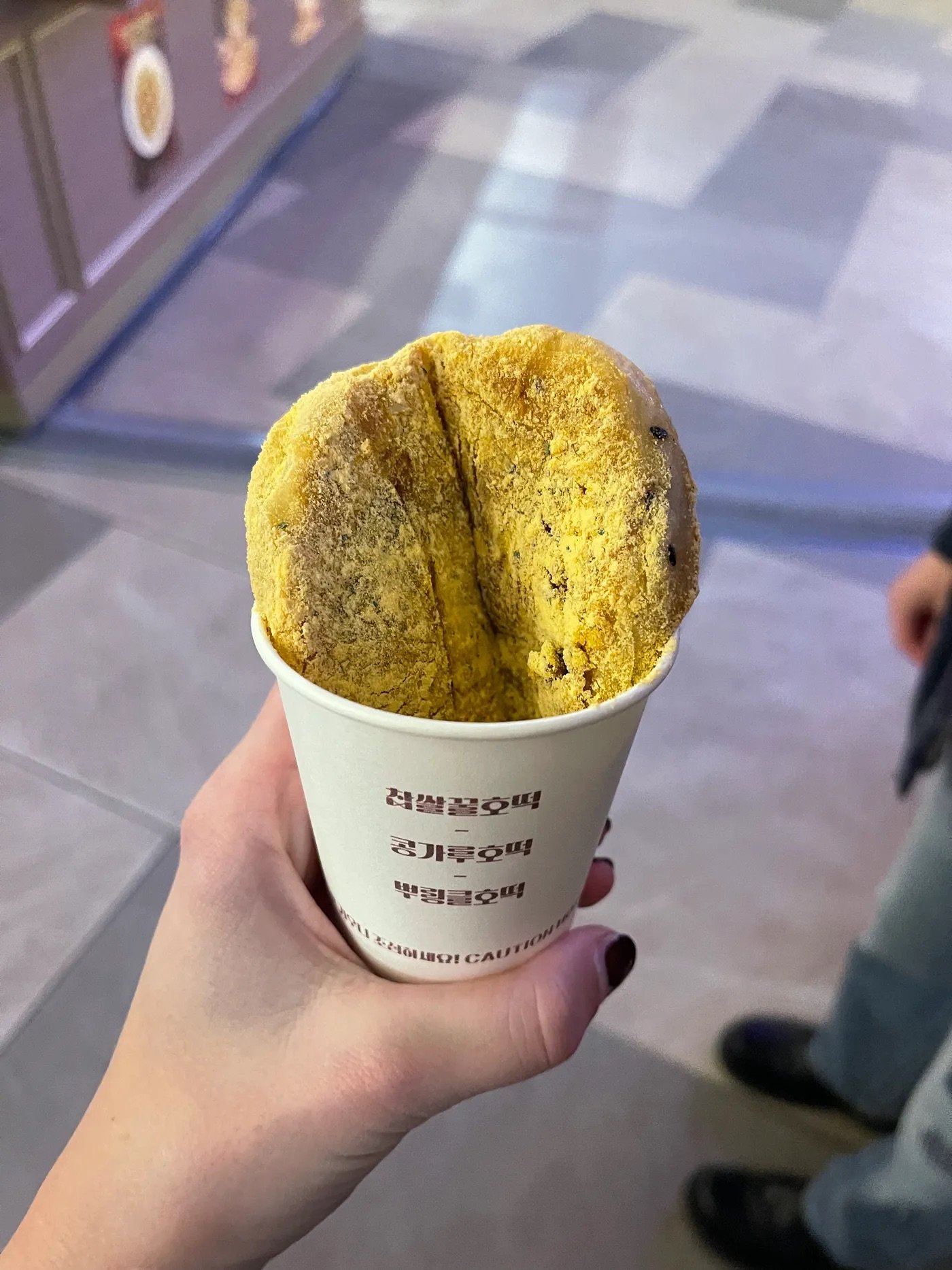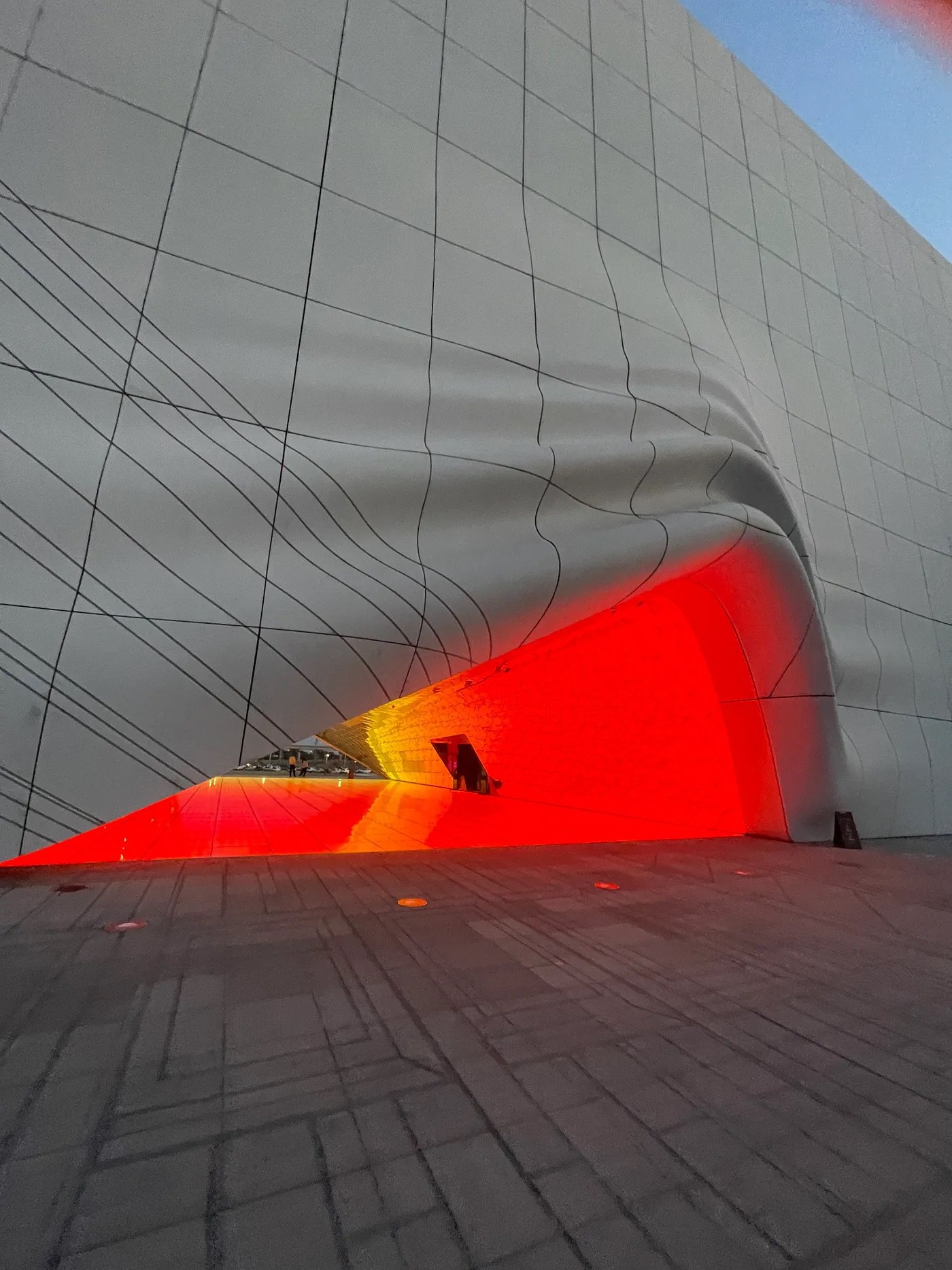When the Airport Hotel is the Destination
You don’t often hear people gushing about staying by the airport, but that’s exactly what I’m going to do about the Incheon area. When most travelers think of airport hotels, they conjure images of utilitarian spaces meant for layovers, quick respites, and maybe a grab-and-go counter. But just beyond the gates of the Incheon International Airport is a cluster of high-design, experience-rich destinations that are redefining what it means to stay near the terminal. From two luxurious Hyatts to the Cimer spa, the art-filled Studio Paradise, the food-lover’s haven of Paradise City (affordable too!), and just across the way, the INSPIRE Entertainment Resort, this corner of Seoul offers an unexpectedly indulgent and transformational getaway—no city center required. What I thought would be an inconvenience because of the way we had booked travel ended up being a highlight of the trip—even more so, my partner and I agreed that on our next trip to Seoul, we would carve out a day or two to spend around the airport. Drawn in by the area’s surprising mix of comfort, culture, and curated escape, the Incheon Airport area is a destination in itself.
Last November, we needed to be in Seoul for a client project for grad school. I’d never been to Seoul, but I had been to plenty of other Asian destinations. We would arrive in Los Angeles from DC a little early, giving ourselves the best chance to adjust slowly, rather than shock our internal body clocks, and we knew we’d want to travel somewhere else in Asia after our week in Seoul. My partner and I booked round-trip Air Premia Premium Economy seats from LA well in advance, as this was going to be the lengthiest leg of the trip; we chose to figure out the regional travel later, as options tend to be abundant and not as cost-prohibitive. We eventually decided on Tokyo for the week after Seoul.
Of course, as any good travel efficiency miser does, I looked into changing our return flight so we could leave directly from Tokyo instead of wasting time returning to Seoul. But we’d have to give up our Premium Economy seats, which would be pricier for a more cramped, less desirable time. We ended up booking round-trip tickets from Seoul, arriving back in Incheon the night before our flight back to the States. We expected it would be a huge hassle to return to the city for only 24 hours (Incheon International is about an hour away from Seoul), so we opted to stay by the airport for a night. What we did not expect was the incredibly thriving ecosystem that existed just outside the airport's gates.
We booked the Grand Hyatt because they are predictably nice, and it was ~$130 USD/ night at the time. We (I) briefly looked into staying at the INSPIRE Entertainment Resort — they boasted a digital entertainment street covered in high-resolution LED displays, an outdoor entertainment park, a “cultural complex” with shopping, dinning, and entertainment, “Korea’s largest foreigner-only casino,” and a year-round indoor water attraction (not that I would be even slightly interested in the last option, but it’s nice to know it’s available and all under the same roof?!). If I’m being honest, the on-site spa is what really drew me in, but at over $300 USD/ night, I was more than fine with the Grand Hyatt.
The staircase at the Grand Hyatt Incheon
We arrive via their free shuttle after about a 10-minute trip from the airport. The main entrance is floor-to-ceiling windows, shaped like the curve of a bow. It’s as if I’m walking alongside, and then inside, the ribcage of a transparent whale. It reminded me of a vertical rendition of Dulles’ curved hammock roof, if Dulles were nice. Our bags are whisked away to our rooms, and the concierge patiently answers our questions about available dining options, as we’ve arrived at an awkward eating hour. Soon, we’re on our way, equipped with a map of the grounds and the surrounding area, with extensive scribblings along the sides. Little did we know, we would have our own entertainment resort right next door; I would barely even think about INSPIRE again.
I think it’s important to mention that I love a development complex. I regularly go to Tysons Corner in Virginia when I’m home. You can people-watch and enjoy a good matcha soft serve with free parking (the soft serve options within DC are lamentable, as is the free parking). You can see a movie and buy a sweater. You can waste an afternoon when you have nothing else to do, and no one will question your existence there. It’s sad that malls and places like Tysons are some of our few remaining third places, but that’s a topic for a different day.
Matcha Cafe Maiko in Tysons Corner
I love places like this almost automatically because it appeals to my inner control freak. Everything is well mapped out, so pre-planned, so clean. It’s like Disney World or The Truman Show—you don’t want to live there all the time, but it’s nice to occasionally indulge the senses as a city-dweller and experience wide open spaces again. People in the suburbs are friendly for friendliness' sake. And, observing or participating in the well-oiled machine that is capitalism on steroids is a kind of rubbernecking that meets a need. Everything is just within arm’s reach.
Entering Paradise City, which is right next door to the Grand Hyatt, is a little bit like entering Tysons Corner II (the glamorous one), or maybe an all-ages version of the Cosmopolitan Hotel in Las Vegas. Just outside, in their front garden, a tacky and unsubtle crown sculpture lies in one of the many fountains, accompanied by a life-size chess set; something you learn to expect from a hotel with multiple pools and an on-site casino. The palatialness of the front lobby is the first thing you notice. There are 15-foot cased openings on your left and right, one leading to an elegant check-in/ check-out lounge and the other to a cushy, living room-style tea room and bar. The staff in the bar/ lounge area are wearing outfits that remind me of what a maid in The Haunting of Hill House might wear, but not in a scary or creepy way. More in a “I know what you want before you do” way; oddly reassuring.
Looking straight ahead, there’s a generous marble hallway that leads into a circular vestibule. At the center of the vestibule is a yellow Yayoi Kusama pumpkin, and above that, a chandelier made of over 7,000 crystal droplets shaped like a diamond pointing toward the floor. The tiny droplets mimic the twinkling holiday lights wrapped around the second-floor balcony. I’m quite familiar with Yayoi Kusama and her work; At one point in my life, I worked at a contemporary arts museum in Los Angeles. And even before that, as a toddler, I was giving unsanctioned tours of artwork around The Met and the MoMA in New York. I was engrossed with pointillism and Post-Impressionism at the time, amongst other things, and patrons of the museum were hanging on my every, five-year-old word.
Yayoi Kusama’s “Great Gigantic Pumpkin,” MIOON’s “Moving Gate” to the right, and “Your crystal” above
Walking into Paradise City, I was not expecting to see works by Anish Kapoor, Damien Hirst, Peter Halley, Roy Lichtenstein, and Jeff Koons, amongst many others. I learned later that an exhibition of Banksy and Keith Haring’s work was held at Studio Paradise in 2023. There is also a sizable amount of brilliant work by Korean artists such as Sungpil Han, Nam June Paik, MIOON (Min Kim and Moonchoi)—who did the chandelier and the casino entrance—and Myongbeom Kim. This is a generous surprise.
From the central hub where Kusama’s pumpkin is displayed, several corridors veer off in different directions, each inexplicably named something like “Purple Wing,” “Red Wing,” or “Gold Wing;” a kind of colorful Diagon Alley of choices promising unnamed adventure and magic. You can see MIOON’s Moving Gate entrance to the Paradise Casino from here, also made of kinetic crystals, trying to lure the atemporal visitor inside rhythmically.
But I know what I’m here for and am only willing to be temporarily distracted. I believe we travel down the “Purple Wing,” past their Michelin-starred restaurant and buffet, “On the Plate.” There’s a large seating area for the restaurant, canopied by a glass atrium, next to the walkway we’re on. The foot traffic path is separated from the restaurant by planters, which gives the sense that pedestrians are filing past an enclosure at a zoo. “I wonder how that one likes their pasta,” and “Do they really eat meat that color?!” I imagine we’re all wondering.
We arrive in a long hallway that, at first glance, seems like a James Turrell exhibit. It becomes obvious how many families with small children are here today. The hall is actually a playfully lit kids' zone/ photo opportunity, decorated with Christmas accoutrements. Parents are dashing between structures, trying not to miss a single moment of cuteness. I want to pull out my phone and capture some of the adorable shyness and sweet coyness, but I think better of it.
Once past the play zone, we are standing at the gates of El Dorado. We arrive at the promised land, the Mecca—the Paradise City Plaza “Premium Food Hall!” You’re greeted by what can only be described as a sensorial smorgasbord of dreamlike proportions for the indecisive and multipotentialites among us. The sights and smells emanating from all kinds of food stands and hawker stalls are intoxicating. There are options for curry, kalguksu, hand-made dumplings, Thai rice noodles, udon, tonkatsu, donburi, and even burgers. My partner and I both short-circuit for a bit, circling the vendors like ravenous hyenas, trying not to over-order but also succumbing to the idea that we would be doing just that. I order my chicken katsu plate, receive my buzzer, and then decide to peruse the Plaza.
The scale of the shopping center isn’t obvious until you leave the food court. Once you enter the main atrium, you immediately notice KAWS’ Together statue on your left, which, if you’ve seen it before or are familiar with his sculptural work, you know it requires space. On the ground floor, a dozen or more stalls are meant to look like Santa’s elves’ cabins. They’re hawking all kinds of treats—dainty little chocolate squares and truffles, hotteoks, tteokbokki, and all kinds of hot and cold beverages (spiked and kid-friendly).
I take the escalator to the second floor, making sure I don’t miss anything. Having more of an aerial view of the space, I realize there are standalone restaurants on every floor—hotpot, KBBQ (is it just BBQ in Korea?), steakhouses, Japanese, and sushi places—most of which haven’t opened yet because of the odd hour. There are also retail stores, mostly for clothing, but many of these stores are closed, maybe because it’s Sunday. When I reach the balcony viewing area, I again marvel at how many people are here—was this a typical Sunday, or was something special for the holidays? I snap some photos and turn around to head back downstairs, but I’m now facing a doughnut counter. I file this information away for later; my buzzer is vibrating in my hand.
I skip back to the food hall and retrieve my chicken katsu to join my partner, who’s hopefully received his dumplings and shumai by now. We put our trays down in the clean, brightly lit seating area, watching the organized chaos swirl around us. We finish our plates, bellies happy and full, and I tell him we have to go check out Santa’s little village. When we round the corner, we run into what looks like an acrobatics team, stretching and warming up. They’ve got hoops and large twirling batons, and they’re dressed in candy-striped leggings and red velvet onesies. A crowd is forming just beyond the stage curtains we’re behind. Santa’s little helpers are about to put on a show, after all.
Hotteok
I buy some Dubai chocolate, which is fabulous as always, and a hotteok. I was planning on getting one at the Namdaemun Market, close to where we were staying, but we went too late and everything was closed. So this was my first and only hotteok of the trip. Delicious—warm and chewy, a little sweet, with what seemed like a dusting of cinnamon on top (I usually wouldn’t like the cinnamon, but it was fitting). We browse the Christmas market tent selling holiday decorations and food items. We watch a bit of the Cirque du Soleil-style performance and we check out the rest of the art in the Plaza, including Venus by Seung-mo Park. We go upstairs to purchase some doughnuts from the bakery I spotted earlier, BeeBeede. The energy on the little cafe terrace is part circus, part boutique home goods store, in the best way possible. They have these adorable coffee mugs for sale that look like a collab between their brand and Studio Palu.
At BeeBeede
Once we have our fair share, we exit on one side of the Plaza. We find Cimer, a huge Korean spa advertised around Seoul. We pass briefly by Wonderbox, a theme park meant to resemble a nighttime fair for families. Oddly, I read an online review that said Paradise City Plaza wasn’t where kids could be entertained, but this Wonderbox would do the trick. I find this hard to believe, but maybe we came on an extra special day. We didn’t so much find Chroma as were pulled toward it—like moths to a flame — compelled to step into the spectral space tunnel the moment it caught our eyes. Wandering through the color gradient, I hoped it might count as a red light treatment, not that I hadn’t already indulged in my fair share of Korean beauty. Alas, Chromas is no spa—far from it. Chroma is a club. But tonight, it is just us and a few kids on scooters, staring wide-eyed and open-mouthed. Do people living in Seoul really come out here for nightlife?
The entrance to Chroma
We make our way back through the enchanted forest from which we came, stopping to take a peek at the garden/ courtyard within the hotel on our way out. We see this interesting deer installation called One by Myeongbeom Kim and C-Curve by Anish Kapoor. I was unfamiliar with Kim’s work, so I looked him up after we got home. His pieces are whimsical and ethereal, like One. His untitled work of a bird landing on a red rope stanchion caught my eye. And his wood and steel watchtower, reminiscent of the steps to a diving platform which has come unmoored from its pool and thus its original meaning, are quite melancholy. Many of his works seem to represent the tenuous relationship between our natural and constructed environments—surreal, dreamlike, and evoking a sense of suspended wonder.
We hop back across Paradise City and the Grand Hyatt’s carports, go up to our rooms, and enjoy our doughnuts. We change into robes and settle in for the evening, contemplating if we’ll have the energy to venture out again. In the end, and rather unsurprisingly, we opt for room service. There are few greater pleasures than delicious food being brought directly to your room, directly to your bedside, in those adorable little silver metal covers. Even if the food’s just okay, the act of having everything all in one place, all under the same roof, just a phone call away, is delicious. More so than anything, that is the appeal of places like Tysons Corner and Paradise City.
Room service at the Grand Hyatt Incheon
Everything in just its right place, a short walk or phone call away. Sometimes in our chaotic, messy world, what you need most is to be taken care of; for someone else to figure it all out. That’s why these places are so magical. A hotteok will appear unexpectedly. A bowl of pasta will arrive right when you need it. And a shuttle will bring you to exactly where you need to go. There is real beauty in that.









